Finishing What They Started
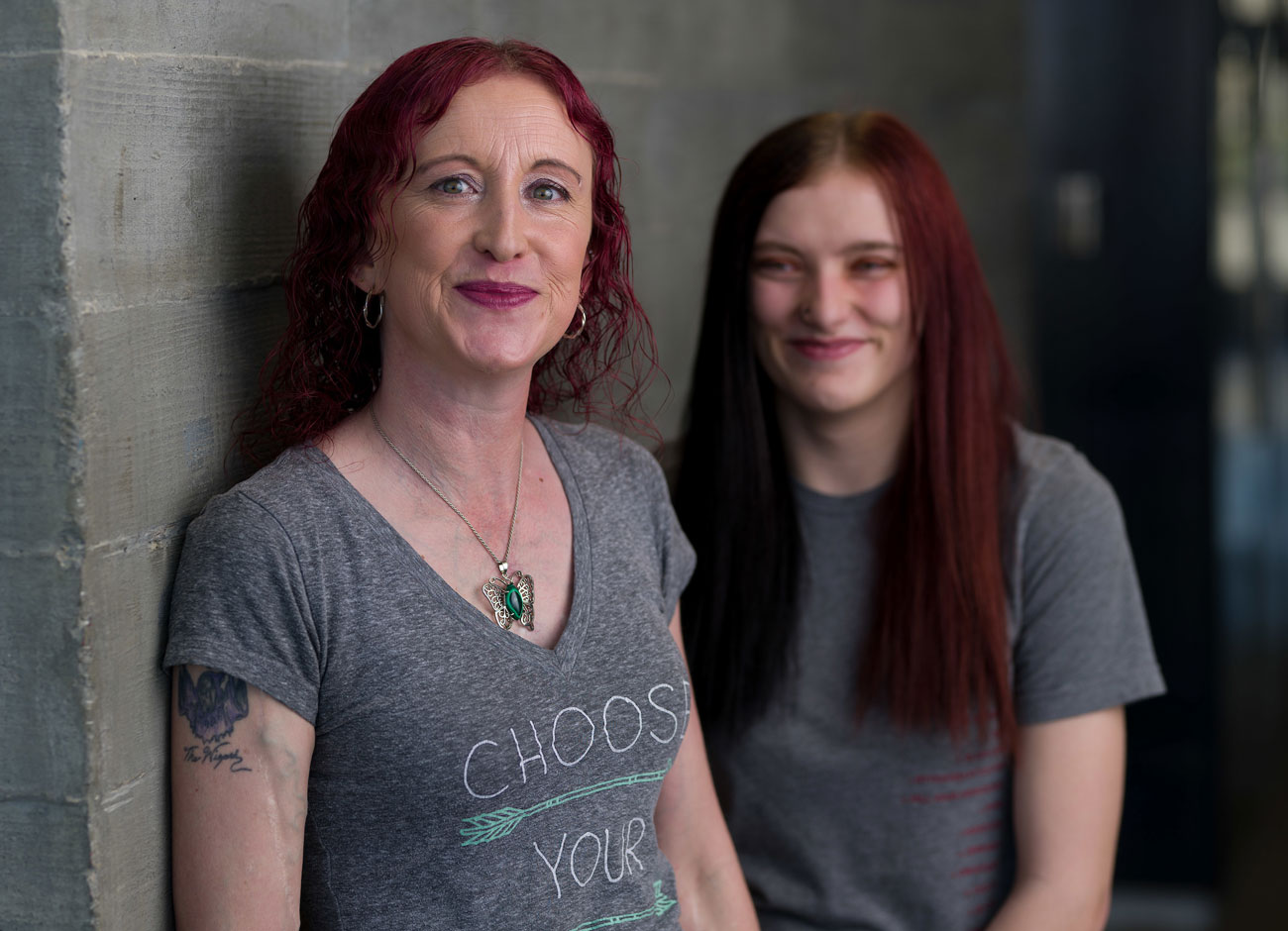
If academia is a freeway, people might exit before their destination for any number of reasons.
Some might seem small to an outside observer while others appear urgent. But once students find themselves exploring backroads and side streets, it takes inspiration, determination, and sometimes a bit of friendly assistance to find the on-ramp.
For instance, I was always a good student, if easily distracted. I had a supportive family and a preschool teacher for a mother who taught me the value of reading. Despite those advantages, other challenges would delay my graduation from Utah State University for nearly a decade.
Upon graduating in 2006 from Sky View High School in Smithfield, Utah, I served for two year as a missionary for The Church of Jesus Christ of Latter-day Saints in Japan. Afterwards, I enrolled at USU with an academic scholarship. But once I’d gotten up to speed on the university freeway, I became aware of competing forces pushing me to leave early. My academic advisers recommended that I wait until graduation to start a family, because most students were dropping out after marrying and having children. My religious leaders, however, were exhorting marriage and children as soon as possible.
I did marry, moving one lane closer to the exit.
I even had professors recommend I stop working at the campus paper The Utah Statesman, because they’d seen student reporters’ academic work suffer and even drop out of the program. I could understand how that might happen, because the rush of writing, editing, and publishing articles multiple times a week made class assignments seem trivial.
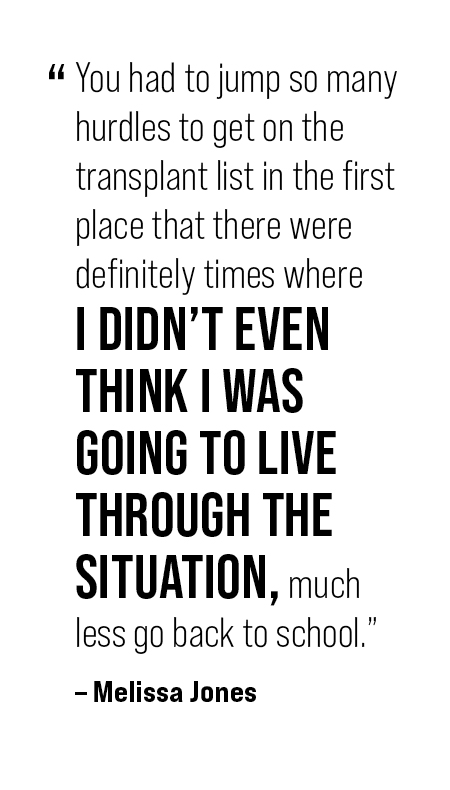
But I worked my way up to editor in chief, not realizing the way it would later tempt me to start a career before finishing my degree.
A difficult start
As a kid, Melissa Jones also wanted to be a doctor or an actor. But a couple of weeks before her 18th birthday, a friend drove Jones to the hospital after the onset of excruciating stomach pains and a host of other symptoms, including pneumonia.
“Once they did some tests, they found out my potassium was high enough I was about to go into cardiac arrest,” Jones says. “And that’s when they Life-Flighted me to the University of Utah.”
Over the next two and a half months, doctors determined that Jones was experiencing kidney failure. She was eventually diagnosed with the autoimmune disease lupus erythematosus.
“It was terrifying,” Jones says, “especially because my parents weren’t the greatest parents, and my mom had run off with her boyfriend and my dad was currently in jail. So, I did it all by myself.”
She went into a coma for a few days, and when she woke up doctors started her on chemotherapy to back the lupus away from her kidneys. During her stay, hospital workers helped her apply for disability benefits — otherwise, paying for her care would have been extremely difficult, if not impossible.
Any plans of higher education — or even earning her diploma — were postponed. Jones moved from Manti, Utah to Seattle to live with her boyfriend’s family to get a job and start rebuilding her life.
A downsized dream
Like me, Rick Gomez also opted for a career instead of a college degree. He grew up in Brigham City, where his mother was a secretary at Box Elder High School, planting an interest in education that he wouldn’t pursue until decades later.
“You’re thinking totally different things when you get out of high school,” Gomez says. “You want to conquer the world, you want to do this, you want to do that. You don’t want to go into teaching, it’s boring, blah blah blah.”
By his early 30s, he was married with six children and making $30 an hour as a machinist at Autoliv. It was easy to focus on the work. The challenge came when Autoliv restructured and Gomez was downsized.
“I was faced with, at that moment, either going back into machining for another company on third shift (or night shift) for another five, six, seven years,” Gomez explains, “or, you know what, (I) could pick up a new trade.”
He and his wife reasoned that if they could both get teaching degrees, they could live on the same budget they’d been used to, and have summers and school holidays off with their kids.
Gomez headed toward the on-ramp. But when he and his wife only had to complete their student teaching, their plans were derailed.
“We were going to be the first married couple to ever come through the entire program together, to boot at our age,” Gomez says. “It was going to be a big to-do, and it just didn’t come to fruition.”
Gomez says his wife began to have “severe mental health problems,” and shot herself in the leg. “That just started a cascade of problems that turned into this huge legal mess and divorce. And so, I just quit going to school.”
Stranded in the NICU
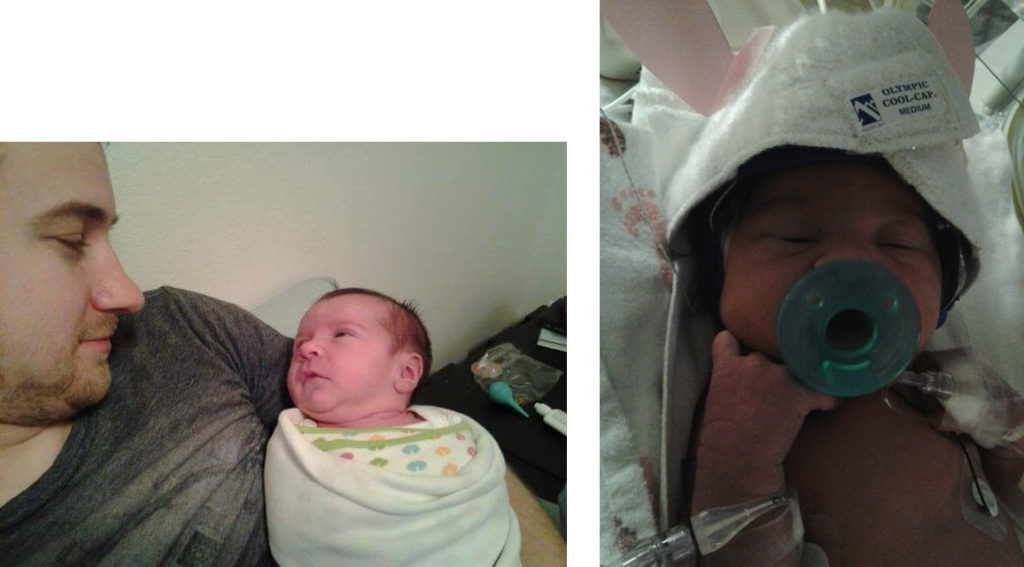
As Sarah and I were expecting our first child, I was unwittingly close to my exit but one traumatic event — a mere speedbump in the road of life compared to Gomez and Jones’s experiences — derailed my plans.
Sarah went into labor a couple of weeks before her due date. Everything seemed to be chaotic in a normal sort of way, until the delivery room monitors reported that the blood oxygen saturation of the baby took a nosedive. It recovered briefly, only to dip dangerously and repeatedly. Sarah was rushed down the hallway for an emergency C-section.
Today, Charlotte is a healthy wildcat 9-year-old who spent her first 72 hours of life on cold cap therapy, a device that refrigerated her head to slow the reintroduction of oxygen to her brain.
Our stay in the neonatal intensive care unit was brief compared to Melissa Jones’. She was living in Boise when she had her own emergency C-section. Heaven Lee Dawn was four months early and at 1 pound, 10 ounces, she would require 78 days in the NICU.
“She’s my miracle baby,” Jones says. “And I would have to say she’s what keeps me going. I don’t like to be sick … because she worries about me. And it’s pretty much just me and her.”
Doctors told Jones to wait at least six weeks before going back to work at the Sage Cafe.
“I waited two, and then I chose to go back to work because of financial reasons,” Jones explains. “But it was also I kind of came home with postpartum, but I didn’t have a baby to even help comfort that situation.”
Jones could visit Heaven and sing to her for 15 minutes at a time through an incubator.
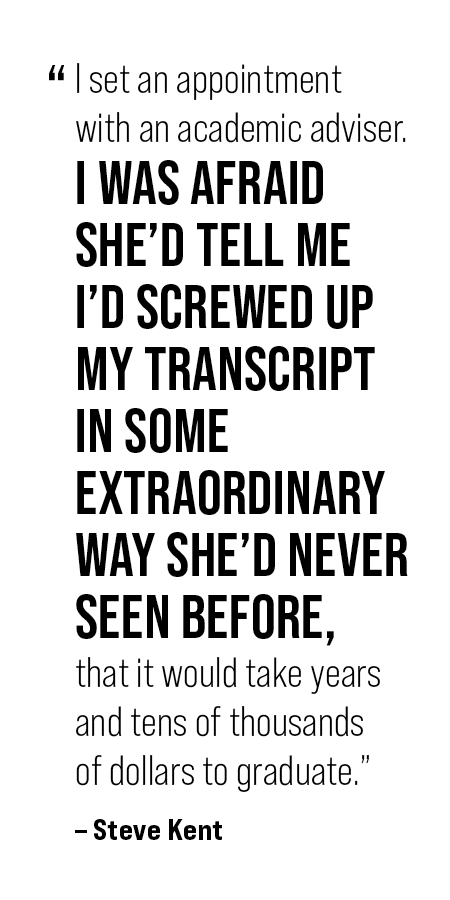
When I shared my own brief NICU experience in the NICU, Jones offered her own sympathies.
“It’s still scary,” Jones told me. “Seeing your baby hooked up to things. It’s scary no matter, for any circumstances.”
And it was. The cold cap therapy made Charlotte shiver. She kept pulling her monitors’ adhesive contacts off by the wires, setting off alarms every few minutes. She would cry and we couldn’t hold her. At one point, a nurse told us she was crying because she was likely going through morphine withdrawal.
Even after we could take our newly wireless baby home, postpartum depression hit Sarah hard. Everyone had told her how wonderful having a baby would be, but nobody ever mentioned this very common condition that at times overwhelmed her and hampered her bonding with Charlotte. She needed a lot of emotional support and time to rest and recover, and Charlotte needed care of her own. And despite Sarah still being on her father’s insurance, the medical bills were accumulating.
In school, I missed several assignments and a few projects. My professors were accommodating and encouraged me to complete make-up work, and when I missed deadlines in a couple of classes, granted me incompletes and encouraged me to finish over the summer.
Mentally and emotionally, however, I’d already exited the academic freeway. I could have salvaged my original itinerary. But it was hard to see the value of letter grades when Sarah was staring down postpartum depression. It was hard to understand the value of one piece of paper when I had the option to immediately start a career designing and editing the daily newspaper.
I worked for the majority of the 2010s at The Herald Journal. “I’m just finishing up my degree” gradually turned into “I can’t see the point of finishing my degree when I’m already working.”
The return to academia
During her pregnancy, Jones’s lupus quieted down. But afterwards it came back “with a vengeance,” Jones says.
After her initial illness, doctors estimated about 18 to 25% of Jones’s kidney tissue was still functioning. Three years after her pregnancy, however, her kidneys failed again. Jones had to undergo dialysis three days a week, forcing her to quit her job and go back on disability.
“When you come home, you feel half-dead from dialysis,” she explains. “Then the next day you finally feel a little better, and then the next day you’ve got to go back and have dialysis.”
That was her routine for two and a half years. She had 13 surgeries on her arms to keep providing access points for the treatment.
Jones had completed her high school diploma through a program in Seattle, and she wanted a chance to better her circumstances.
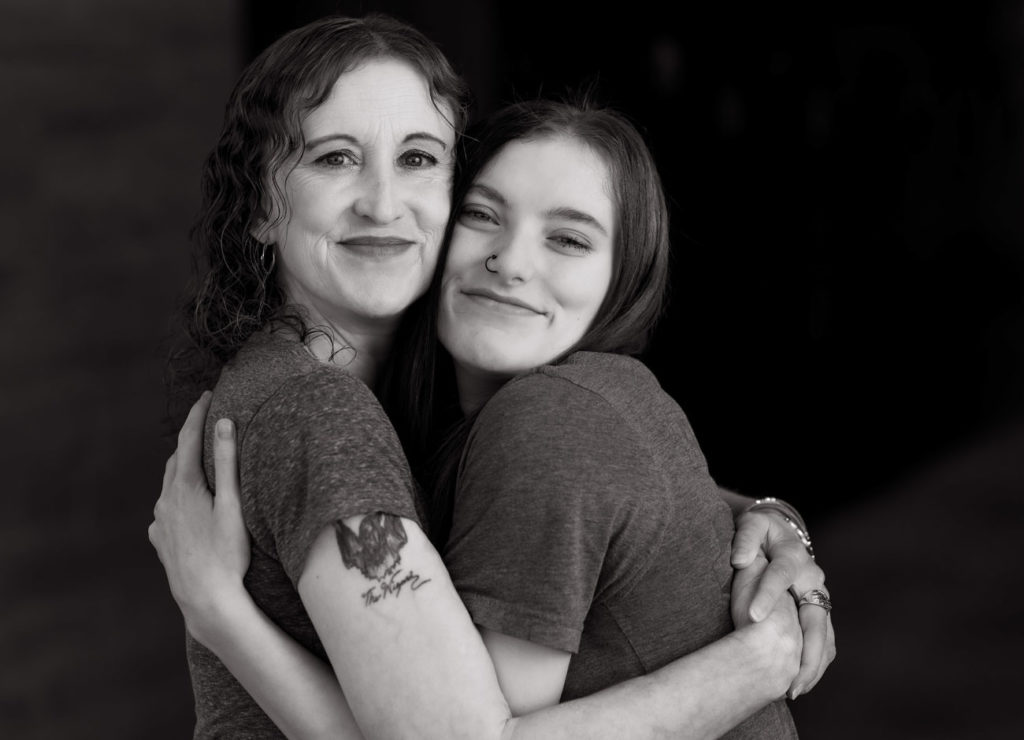
“You had to jump so many hurdles to get on the transplant list in the first place that there were definitely times where I didn’t even think I was going to live through the situation, much less go back to school,” she says.
Finally, in 2016, she received a new kidney.
“After my transplant, it was pretty much a second lease on life to get a career.”
Jones enrolled in USU Eastern in 2017 to become a nurse. But her troubles are far from over. Jones was diagnosed with squamous-cell carcinoma in March and began chemotherapy in April. However, whatever challenges she faces next, she finds her strength to continue in Heaven.
“I’m very proud to present to my kid, whatever comes up in front of you, you can achieve your goal,” Jones says. “You can still go to school’ it’s not too late. And you can do it.”
Like many students who return later in life, Jones appreciates the schoolwork and enjoys the advantages of more mature skills and life certainty.
“I wasn’t forced, and I’m the one that’s paying for it and getting loans for it,” she says. “It matters more to me. Plus, it feels great to get a good grade no matter what age you are.”
I can relate.
In 2019, I was the paper’s assignment editor when two reporters finish their degrees. Watching them do it was enough for me to realize how close I was to graduating myself.
I set an appointment with an academic adviser. I was afraid she’d tell me I’d screwed up my transcript in some extraordinary way she’d never seen before and it would take years and thousands of dollars to graduate. But the worst that could happen, I kept reminding myself, is that I’d be back where I started, slugging it out in a noble profession for high stress and low pay.
My adviser did a wonderful job of making me feel welcome. She’d seen plenty of transcripts like mine, and had, in fact, returned to college later in life herself. She sympathized with how easy it is to get detoured and made it easy for me to return, determining that I could fulfill my degree requirements in one or two semesters and reassuring me that I’d probably qualify for grants and scholarships.
USU has helped 25 students like me finish their degrees since the outreach campaign began. In summer 2020, a grant by the Clark & Christine Ivory Foundation funded a pilot effort to invite former USU students who left without graduating to complete their degrees with scholarship support to cover their tuition. Individuals within 30 credit hours of graduation and a gap of at least five years in their education were emailed and texted about the opportunity by USU staff.
The Ivory Foundation recently funded another round of grant support for USU students to finish their education. Recipients must plan on completing their degrees within a certain time frame. Students may finish the degree they started or change to a complete program in Integrated Studies using the credits they’ve already earned.

“I am grateful for the Ivory Foundation and their generous contribution to our student’s success,” says Kandice Woody Jeppsen, USU’s statewide director of student success and strategic initiatives who oversees the program. “Many of these students left because of life’s challenges and need a little help to complete their goals. I am so proud of them for taking the initiative to return and finish this remarkable achievement.”
Personally, I found juggling family, school, and work easier this time around, even after the COVID-19 pandemic struck midway through my final semester. Earning my bachelor’s enabled me to move to a more secure, less stressful job. Life’s speedbumps haven’t stopped, but attaining my degree has upgraded my capacity to handle them.
On the road to completion
It took 15 years before Rick Gomez got the encouragement he needed to come back to school.
“After a while when you live with someone who’s just got really severe mental health problems, you just start to believe that your life is never going to really take an upward curve,” he says. “I don’t know how to explain it, but you almost start to become depressed, too, and you start to think that things aren’t going to look up for you.”
A former high school classmate, Lauri Merrill, happened to be an admissions specialist for USU Statewide Campuses. She reached out to Gomez to tell him about resources to help students finish their degrees. Such resources are now coordinated through the finish.usu.edu.
“It’s actually a pretty astounding program,” Gomez says. “I was out of school for 15 years, and people are not (all) like me, they were out of school even longer when they came back to this program.”
It can be hard to get back into that mode of going to school and getting classwork done, he admits. “Listen, I’m 52 now, and not many opportunities come around to get a second chance to do something.”
Gomez has remarried, and his wife and family have helped him continue.
“I want them to know that it’s achievable, no matter what time and what stage of life they’re at,” Gomez says.
His parents told him he could do hard things during challenging moments of his life and that echoes with him today.
“My dad … when I played high school football, he would always tell me, ‘You gotta get up. You gotta get up.'”
Gomez’s challenges aren’t over. He was on track to graduate last spring, but his father’s health suddenly deteriorated last fall. He died three days after Christmas.
“He fell into really bad health about halfway through, and it really affected everything, our entire lives,” Gomez says.
He’s been here before: So close to graduating when disaster strikes. But Gomez also knows it’s never too late to finish.
By Steve Kent ’20
Photos by Levi Sim






